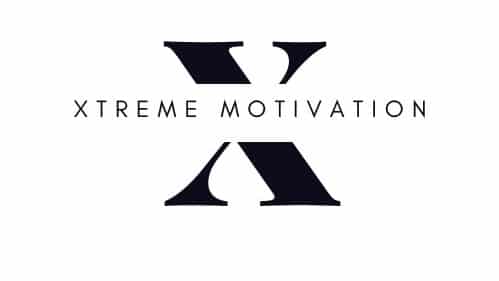ENTREPRENEUR
Human Relations Skills: A Profit Pumping Tool For Businesses

Human Relations Skills: Mastering Interpersonal Dynamics for Career Success
Human relations skills are fundamental to both your personal growth and career success. These skills encompass a set of competencies that enable effective communication and interaction with others.
In the workplace, strong human relations can lead to enhanced collaboration, improved morale, and increased productivity. They allow you to build relationships, resolve conflicts amiably, and create an environment where teamwork and mutual respect thrive.
Developing your human relations skills is a continuous journey that contributes significantly to your professional development. As you advance in your career, these skills become increasingly critical in leadership and management roles.
By refining abilities such as active listening, empathy, and constructive feedback, you lay the groundwork for a work culture that values openness and inclusiveness.
Achieving competence in human relations empowers you to navigate the complexities of interpersonal dynamics with confidence. This not only bolsters your career trajectory but also enriches your interactions outside of work.
Whether you’re collaborating with colleagues, networking with peers, or leading a team, your ability to connect with others on a human level is a powerful tool in nurturing mutual success.
Understanding Human Relations Skills
In this article, you’ll gain insight into what constitutes human relations and the reasons behind their inception. Human relations encompass effective and empathetic interaction among people, which are fundamental for both personal and professional growth.
The Concept of Human Relations
Human relations are the oil that keeps the engine of an organization running smoothly. They encompass your ability to relate to others, to promote teamwork, and to resolve conflicts. This skill set includes empathy—the ability to understand and share the feelings of another.
Empathy is a cornerstone of human relations, as it facilitates genuine connection and trust between people. Noteworthy is Dale Carnegie, whose influential book “How to Win Friends and Influence People” outlines principles of human relations that remain relevant today.
These principles underscore the importance of respecting others’ opinions, never criticizing, and always showing appreciation.
Historical Overview Of Human Relations Skills
The study of human relations skills has evolved significantly over the years. It gained momentum during the early 20th century when researchers began examining worker satisfaction’s impact on productivity.
The Hawthorne Studies, conducted in the 1920s and 1930s, highlighted the psychological aspects of work, suggesting that workers were not just motivated by money, but also by social factors and group dynamics.
This led to a greater emphasis on employee needs and the role of management in promoting a positive work environment. It underscored that relationships at work are not merely transactions, they are as intricate and important as the tasks at hand.
Interpersonal Human Relations Skills and Communication
Your ability to navigate social interactions hinges on effective interpersonal skills and communication. This includes how well you listen, convey ideas, and interpret both verbal and non-verbal messages during an interaction.
Active Listening
Active listening goes beyond hearing words, it involves processing and understanding the speaker’s message. When you listen actively, you give full attention to the speaker, acknowledge their words with appropriate feedback, and refrain from interrupting.
Implementing active listening enables you to nurture better connections and understand the speaker’s perspective more accurately.
Verbal and Non-Verbal Communication
The amalgamation of verbal and non-verbal communication plays a critical role in conveying your message and emotions effectively. Verbal communication involves the words you choose, and how you use them.
While non-verbal communication encompasses facial expressions, body language, and gestures. By aligning verbal cues with non-verbal signals, you ensure that your message is consistent and clear.
Written Communication
In contrast to spoken interactions, written communication requires a different skill set, including the ability to express ideas clearly and concisely in writing. Whether it’s an email, a report, or a social media post, your writing should reflect your intention without the aid of body language for emphasis, making your word choices and the structure of your writing all the more vital.
Emotional Intelligence and Empathy
In the realm of human relations skills, emotional intelligence (EI) and empathy are crucial for effective interaction and understanding. These concepts help you navigate your own emotions and those of others.
Self-Awareness
To master emotional intelligence, you must first become adept at self-awareness. This involves recognizing your emotional states, understanding your typical reactions, and appreciating how your emotions can affect your behavior and decision-making.
Self-Regulation
Self-regulation is your ability to manage and adjust your emotional reactions in different situations. By controlling impulses and adapting your emotions, you align your actions with your values and the demands of your environment.
- Practice techniques like deep breathing for calm intense emotions
- Set goals for emotional responses in challenging situations
Understanding Others
Empathy is about perceiving and relating to the emotions of others. It goes beyond mere recognition, it involves an active effort to understand perspectives and feelings. In doing so, you enhance your interpersonal relationships and communication.
- Observe body language and verbal cues to gauge emotions
- Listen actively to understand, rather than just reply
Building and Leading Teams: Pivotal For Human Relations Skills
Effective team-building and leadership are pivotal to the success of any group effort. You need to get these right.
Team-Building Principles
You must first understand and implement core team-building principles to lay the foundation for a highly effective team. It begins with recognizing the diversity of personalities and fostering an inclusive environment where everyone feels valued.
Setting clear objectives and roles is crucial, as is the creation of open communication channels for transparent discourse. For instance, McGraw Hill emphasizes the mix of personalities in the workplace, highlighting the importance of strong human relations.
Additionally, trust-building activities that engage all team members can significantly increase the overall cohesiveness and productivity of the team.
Leadership Skills
Your leadership skills determine the group’s ability to overcome obstacles and reach its goals. As a leader, you must embody flexibility and empathy and communicate in a way that is both convincing and motivating.
Leaders have to encourage team discussions that promote problem-solving and innovation. According to the Project Management Institute, leaders need to be people-centric, fostering team discussions that encourage a creative flow of ideas.
Encouraging Teamwork: A Vital Component For Human Relations Skills
Fostering teamwork is about harnessing team members’ strengths towards a common objective. Collaboration is key—encouraging active listening, valuing all contributions, and ensuring collective buy-in.
The strategies outlined by PALTRON for retaining employees underscore the importance of creating a positive work environment, clear communication, and growth opportunities — all of which contribute to enhanced teamwork.
By nurturing a culture of mutual respect and shared responsibility, you enable your team to perform synergistically and adapt robustly to any challenges.
Inclusive Work Environment
In an inclusive work environment, you prioritize diversity and make cultural competence a cornerstone of your workplace culture. By creating a positive work environment that respects people’s differences, you promote collaboration and innovation.
Promoting Workplace Diversity
Diversity refers to the representation of different races, ethnicities, genders, sexual orientations, ages, physical abilities, religious beliefs, and other characteristics. To promote workplace diversity, it’s essential to:
- Understand the business case: Recognize that diverse teams can lead to improved innovation and decision-making.
- Recruit broadly: To avoid unconscious bias, broaden your hiring channels and strategies.
- Provide diversity training: Educate your employees on the importance of diversity for a more inclusive environment.
Cultural Competence in the Workplace
Developing cultural competence involves understanding and appreciating cultural differences. It’s about:
- Empathy: Building empathy is key to acknowledging different perspectives and experiences in the workplace.
- Continuous learning: Encourage ongoing education and cultural awareness among your employees.
Creating an Inclusive Culture
To create an inclusive culture where every person’s feels valued, you should:
- Implement policies that promote inclusivity and zero tolerance towards discrimination.
- Conduct an employee survey to understand their inclusivity needs and act on the findings.
- Celebrate diversity: Showcase the different cultures and backgrounds present within your team to enhance a sense of belonging.
By promoting these practices, you contribute to a sustaining positive work environment where everyone has the opportunity to thrive.
Conflict Resolution and Negotiation
In mastering human relations skills, it’s essential to understand how to manage disagreements effectively and achieve mutually beneficial outcomes. The following explores key strategies and techniques in conflict resolution and negotiation, including structured processes like mediation.
Conflict Management Strategies
Identify the Cause: Begin by pinpointing the root of the conflict. Effective conflict management is often rooted in understanding underlying issues, which can range from miscommunication to competing interests.
- Open Communication: Maintain transparency and encourage a dialogue where all parties express their views without interruption.
- Collaborative Goals: Focus on common objectives rather than individual desires.
- Active Listening: Foster a receptive environment by paying close attention to the concerns and suggestions of others.
Negotiation Techniques
For a successful negotiation, your approach should balance assertiveness with empathy.
- Prepare: Research and define your goals ahead of the negotiation.
- Use ‘I’ Statements: Frame your points from your perspective to avoid alienating the other party.
- Offer Solutions: Present alternatives that can benefit all involved parties.
Mediation in Conflict Situations
Mediation involves a neutral third party who assists in resolving. This structured process allows disputing parties to discuss their issues in a controlled environment.
- Select a Mediator: Choose someone impartial and skilled in navigating conflicts.
- Define Ground Rules: Establish guidelines to maintain a respectful and orderly discussion.
- Seek Understanding: Aim for all parties to leave the process feeling heard and respected.
Your ability to resolve conflicts and negotiate effectively hinges on applying these principles of communication and problem-solving, ensuring a collaborative path forward.
Motivation and Leadership Strategies: A Strong Tool For Human Relations Skills
In leading a team, understanding and applying various motivation strategies is crucial for driving productivity and fostering a positive work culture.
Effective leadership hinges on the ability to engage and empower employees through transparency and motivational techniques aimed at boosting morale and employee retention.
Theories of Motivation
You may encounter several theories addressing how motivation works in a workplace setting. For instance, Maslow’s Hierarchy of Needs posits that employees are motivated to fulfill basic needs before moving on to higher-level needs.
Another theory, Herzberg’s Two-Factor Theory, distinguishes between hygiene factors that can cause dissatisfaction and motivational factors that can drive satisfaction. It’s important for you to recognize that employees have different needs and motivators and to tailor your leadership approach accordingly.
Motivation Techniques
To enhance motivation among team members, consider incorporating these techniques:
- Goal Setting: Defined goals can provide employees with a sense of direction and purpose.
- Recognition: Regularly acknowledge and appreciate employees’ accomplishments.
- Feedback: Offer constructive feedback that helps employees grow professionally.
By employing tactics such as praising team efforts, you can effectively increase team happiness and productivity.
Empowering Employees
An essential component of leadership is the empowerment of others. This can be achieved through:
- Autonomy: Trust your employees with meaningful responsibilities and the freedom to make decisions.
- Resources and Support: Provide the necessary tools and support for employees to excel in their roles.
- Transparency: Maintain open lines of communication, sharing important information about company goals and performance.
By empowering your team, you enhance their confidence and ability to contribute, which is instrumental in improving human relations at the workplace and ultimately benefits employee retention.
Personal and Professional Advancement
Advancing in your personal and professional life hinges on cultivating key human relations skills. Your ability to navigate career development, utilize creativity, and build a professional network directly influences your success.
Human Relations Skills In Career Development
To enhance your career development, focus on improving your communication and teamwork abilities. These skills can strengthen your resume and cover letter, making you a stand-out candidate. You need to be able to articulate your accomplishments succinctly and display a track record of working well in team settings.
Innovating and Creativity
Your creativity is a pivotal asset in the workplace, promoting innovation and problem-solving. Displaying confidence in your ideas encourages others to view you as a thought leader. To leverage creativity for career growth, consistently contribute fresh perspectives and solutions.
Professional Networking
Building a robust professional network is crucial. Attend industry events, connect with peers online, and maintain relationships with colleagues. These connections can offer mentorship, job leads, and collaborative opportunities that may not be accessible otherwise.
Your network can also act as a sounding board to refine both your personal and professional presentation skills.
Stress Management and Work-Life Balance
Mastering stress management techniques and achieving work-life balance are crucial for maintaining both your mental wellness and productivity. These skills can empower you to handle workplace demands with resilience and sustain personal well-being.
Stress Reduction Techniques
To effectively manage stress, it’s essential to incorporate stress reduction techniques into your routine. Deep breathing exercises and mindfulness meditation are proven methods that can reduce stress levels. Additionally, setting clear boundaries between work and personal time helps prevent burnout.
Maintaining Work-Life Harmony
Work-life balance involves juggling job responsibilities with personal activities in a way that neither side overwhelms the other. You can maintain this balance by:
- Prioritizing tasks: Focus on what’s important by identifying your top priorities both at work and home.
- Delegating responsibilities: Share tasks at work and ask for help at home when necessary.
Striking a harmonious balance helps reduce stress and increases your overall job and life satisfaction.
Continual Learning and Employee Training In The Field Of Human Relations Skills
In the ever-changing landscape of human relations, your continuous development through ongoing education and employee training is crucial. Enhancing your skills and knowledge base is not just beneficial for your growth but also increases productivity in your organization.
Importance of Ongoing Education: A Cornerstone For Human Relations Skills
Continuous learning is the cornerstone of remaining competitive in the human resources field. By prioritizing your education, you adapt to new challenges and align with modern HR practices that emphasize dynamic learning environments.
Through the ongoing process of acquiring new knowledge, you ensure that your skills evolve to meet the requirements of your role and the industry at large.
Training Programs and Workshops
Investing time in training programs and workshops is pivotal for practical learning and application. These structured formats allow for:
- Interactive discussions that foster deeper understanding.
- Hands-on experience with real scenarios you may encounter in your career.
Workshops, in particular, are geared towards skill application, which can lead to immediate improvements in how you manage HR responsibilities in your workplace.
Ethical Practices and Professionalism
In the realm of human relations, the foundation of your professional life is built on ethical practices. Your actions and decisions are a reflection of your integrity and adherence to the codes that govern your profession.
Codes of Ethics
Codes of Ethics are your roadmap for navigating the complex professional landscape. These codes provide a clear outline of the expectations and standards you should maintain in your work.
For example, you’re expected to respect confidentiality and avoid conflicts of interest. The International Council of Nurses’ Code of Ethics illustrates the essential role that ethical guidelines play in healthcare, emphasizing the values fundamental to the profession.
Professional Conduct
Your Professional Conduct is the outward expression of your commitment to ethics. It encompasses everything from your reliability to your responsibility in fulfilling your role.
Upholding professional conduct means adhering to the conditions of use set forth by your organization or field, and ensuring that your behavior aligns with the ethical standards expected of you. By doing this, you foster a trustworthy professional image.
Integrity in relations
Integrity is the cornerstone of your professional reputation. It involves being honest, transparent, and fair in all your dealings. When you proceed with integrity, you respect the Attribution-NonCommercial-Share-Alike (CC BY-NC-SA) licensing by acknowledging creators for their work and sharing knowledge while respecting the terms laid out by the original content creators.
For instance, in an academic setting, you must give proper attribution when using others’ research and ensure that any shared material complies with these licensing terms.
Feedback and Continuously Improving Human Relations Skills
Feedback is a cornerstone for both personal and organizational development, serving as a medium for continuous improvement. It’s the throughline that connects critiques with performance and turns reviews into stepping stones for progress.
Giving and Receiving Critiques To Enhance Human Relations Skills
To enhance your human relations skills, consider the art of delivering critiques with a future-focused approach that prompts performance improvement. When giving feedback, be specific, and link your observations to actionable insights.
For example, instead of saying, “Your work needs improvement,” articulate what aspects require attention and offer suggestions such as, “Expanding your data analysis skills can improve report accuracy.”
Receiving critiques is just as crucial. Embrace feedback with an open mind, noting that understanding root causes can direct you to the precise skills needing enhancement. Reflect on what is said, and plan your actions toward improvement.
Performance Reviews and Appraisals
Performance reviews and appraisals shouldn’t be dreaded dates in your calendar. Rather, view them as opportunities for growth—moments where continuous feedback culminates into a comprehensive review of your work. Remind yourself that these reviews:
- Complement ongoing feedback mechanisms
- Provide formal platforms for recognizing achievements and identifying areas for development
Integrating the benefits of continuous feedback between these formal appraisals strengthens the bridge between day-to-day performance and long-term goals.
Personal and Organizational Development: Improving Further Human Relations Skills
Personal development in the workplace thrives on a culture of feedback, where skills improvement is a shared value. Organizational development aligns with personal growth when feedback systems support each individual’s progress.
In your role, prioritize creating a shortlist to score potential improvements on aspects like efficiency gains, risk mitigation, and the possibility of automating. Initiatives scoring high on these factors are strong candidates for implementation, which, in turn, fuels continuous improvement in HR strategies, promoting a robust and dynamic organization.
Feedback and continuous improvement are inseparable elements of your professional journey. Being adept in giving and receiving critiques, engaging with performance reviews, and fostering personal and organizational development are keys to unlocking your full potential and that of the organization you’re part of.
Conclusion: Human Relations Skills Through Networking and Community Engagement
In summary, networking and community engagement are essential components of building strong human relations skills. Through these efforts, you enhance your interpersonal skills while increasing your influence and the social capital necessary for collective action and support.
Using These Human Relations Skills By Building Professional Relationships
To effectively build professional relationships, start by identifying key individuals and organizations within your field who can enrich your network. Attend industry-related events and engage in online platforms catered towards professionals, such as LinkedIn, to connect with potential mentors, collaborators, and industry leaders.
Remember to approach each interaction with genuine interest and respect—quality over quantity is key to fostering lasting connections.
Community Involvement
Active participation in local community events or initiatives demonstrates your commitment to the welfare and growth of the areas you serve. Whether it’s through volunteering, serving on community boards, or participating in local improvement projects, your involvement helps to strengthen community ties and showcase your human relations skills.
Expanding Social Capital
Lastly, social capital benefits gained from your social networks play a significant role in your ability to leverage resources and knowledge for both personal and community gains. To expand your social capital, be proactive in nurturing relationships and sharing your expertise and resources unreservedly.
The depth and breadth of your connections can open doors to new opportunities and are essential in mobilizing support for community-driven initiatives. For more guidance on developing social capital, consider reading about it at the University of Minnesota College of Continuing and Professional Studies.
ENTREPRENEUR
Mindset Coaching for Entrepreneurs: The X-Factor For Startups

Introduction
Entrepreneurship requires a unique set of skills and qualities that not everyone possesses. It takes a lot of hard work, dedication, and resilience to succeed as an entrepreneur. One of the most important factors that can make or break an entrepreneur’s success is their mindset. This is where mindset coaching comes in.
Mindset coaching is a process that helps people identify and overcome limiting beliefs, negative thought patterns, and self-sabotaging behaviors that are holding them back from achieving their goals. It is a powerful tool that can help entrepreneurs develop a growth mindset, essential for success in today’s fast-paced business world.
Successful entrepreneurs understand the importance of mindset coaching. They know that their mindset is the key to their success and that investing in their personal and professional development is crucial.
By working with a mindset coach, entrepreneurs can gain the clarity, focus, and confidence they need to overcome challenges, take risks, and achieve their goals.
Understanding Mindset in Entrepreneurship
The Entrepreneurial Mindset
Entrepreneurship requires a unique mindset that is characterized by creativity, innovation, risk-taking, and a willingness to learn and adapt. The entrepreneurial mindset is not limited to business owners or startup founders, it can be adopted by anyone who wants to approach their work with an entrepreneurial spirit.
Those with an entrepreneurial mindset are constantly seeking out new opportunities and ways to improve their skills. They are not afraid to take risks and embrace failure as an opportunity to learn and grow. They are also comfortable with uncertainty and can adapt quickly to changing circumstances.
Importance of Mindset for Entrepreneurs
Having the right mindset is critical for success in entrepreneurship. A growth mindset, which is characterized by a belief in one’s ability to learn and improve, is particularly important. Entrepreneurs with a growth mindset are more likely to embrace challenges and view failure as an opportunity to learn and grow.
On the other hand, entrepreneurs with a fixed mindset, which is characterized by a belief that one’s abilities are fixed and cannot be changed, are more likely to give up in the face of challenges and view failure as a reflection of their abilities.
Recognizing Limiting Beliefs and Mental Blocks
Limiting beliefs and mental blocks can hold entrepreneurs back from achieving their full potential. These beliefs are often based on negative self-talk and can become deeply ingrained over time.
Entrepreneurs need to be able to recognize these limiting beliefs and mental blocks and work to overcome them. This can involve challenging negative self-talk, reframing limiting beliefs, and seeking out support from coaches or mentors.
By adopting an entrepreneurial mindset and working to overcome limiting beliefs and mental blocks, entrepreneurs can unlock their full potential and achieve success in their ventures.
The Role of Mindset Coaching
Defining Mindset Coaching
Mindset coaching is a type of coaching that focuses on developing a positive and growth-oriented mindset. It involves working with a coach to identify limiting beliefs, negative self-talk, and other mental barriers that may be holding an entrepreneur back.
By addressing these issues, a mindset coach can help an entrepreneur develop a more optimistic outlook, which can lead to increased confidence, resilience, and success.
Benefits of Mindset Coaching for Entrepreneurs
Entrepreneurship can be a challenging and stressful journey, and it is not uncommon for entrepreneurs to experience self-doubt, burnout, and other mental health issues. By working with a mindset coach, they can gain the guidance and support they need to overcome these challenges and achieve their goals. A mindset coach can help entrepreneurs to:
- Develop a positive and growth-oriented mindset
- Identify and overcome limiting beliefs and negative self-talk
- Build resilience and cope with stress and uncertainty
- Improve communication and interpersonal skills
- Enhance self-awareness and emotional intelligence
Selecting the Right Mindset Coach
Selecting the right mindset coach is an important decision that should not be taken lightly. Entrepreneurs should look for a coach who has experience working with entrepreneurs and understands entrepreneurship’s unique challenges and opportunities.
They should also look for a coach who is knowledgeable, supportive, and able to provide constructive feedback. Moreover, they should choose a coach who they feel comfortable working with and who they believe can help them achieve their goals.
Strategies for Growth and Resilience
Entrepreneurship can be a challenging journey, and setbacks and failures are inevitable. However, they can overcome obstacles and achieve their goals with the right mindset and strategies. In this section, we will discuss some effective techniques for growth and resilience that can help entrepreneurs stay focused, motivated, and confident.
Setting and Achieving Goals
One of the most important strategies for growth and resilience is setting and achieving goals. Goal setting provides entrepreneurs with a clear direction and purpose and helps them stay motivated and focused.
To set effective goals, they should follow the SMART criteria, which stands for Specific, Measurable, Achievable, Relevant, and Time-bound. By setting SMART goals, they can ensure that their goals are clear, realistic, and achievable, and can track their progress and adjust their strategies accordingly.
Overcoming Obstacles and Failures
Obstacles and failures are inevitable in entrepreneurship, but they can also be valuable learning experiences. Entrepreneurs should adopt a growth mindset to overcome obstacles and failures, which means seeing challenges as opportunities for growth and learning.
They should also seek support from mentors, coaches, and peers, who can provide guidance, advice, and encouragement. By learning from their mistakes and failures, they can become more resilient and adaptable and can develop the skills and knowledge they need to succeed.
Building Confidence and Resilience
Confidence and resilience are essential qualities for entrepreneurs, as they help them stay focused, motivated, and adaptable. To build confidence and resilience, entrepreneurs should focus on their strengths and achievements, and celebrate their successes.
They should also practice self-care, such as exercise, meditation, and relaxation techniques, which can help reduce stress and anxiety. By building their confidence and resilience, entrepreneurs can overcome setbacks and challenges, and achieve their goals with greater ease and satisfaction.
Strategies for growth and resilience are essential for entrepreneurs who want to succeed in their ventures. By setting and achieving goals, overcoming obstacles and failures, and building confidence and resilience, entrepreneurs can develop the mindset and skills they need to navigate the challenges of entrepreneurship and achieve their dreams.
Empowering a Positive Entrepreneurial Lifestyle
As an entrepreneur, nurturing a positive mindset is crucial for long-term success. A positive entrepreneurial lifestyle involves maintaining a healthy work-life balance, managing stress, and practicing mindfulness and self-awareness.
Work-Life Balance and Health
Maintaining a healthy work-life balance is essential for entrepreneurs to avoid burnout and maintain their physical and mental health. It is important to set boundaries between work and personal life and prioritize self-care. This can include exercise, healthy eating, and getting enough sleep.
Entrepreneurs can also benefit from taking breaks throughout the day to recharge and prevent burnout. This can include taking a walk, practicing meditation, or simply stepping away from work for a few minutes.
Managing Stress and Avoiding Burnout Through Mindset Coaching
Entrepreneurship can be stressful, and entrepreneurs need to have strategies in place to manage stress and avoid burnout. This can include setting realistic goals, delegating tasks, and practicing self-care.
Entrepreneurs can also benefit from seeking support from a coach or mentor who can provide guidance and help them navigate the challenges of entrepreneurship.
Mindfulness and Self-Awareness
Practicing mindfulness and self-awareness can help entrepreneurs stay focused, productive, and resilient in the face of challenges. Mindfulness practices such as meditation and deep breathing can help entrepreneurs reduce stress and improve their ability to concentrate.
Self-awareness involves understanding one’s strengths, weaknesses, and triggers. This can help entrepreneurs make better decisions, communicate more effectively, and successfully navigate challenges.
Nurturing a positive entrepreneurial lifestyle involves maintaining a healthy work-life balance, managing stress, and practicing mindfulness and self-awareness. They can improve their well-being, productivity, and long-term success by prioritizing these areas.
Leveraging Mindset Coaching for Business Success
Successful entrepreneurs understand that mindset is a critical factor in achieving business success. Entrepreneurs can unlock their potential and drive sustainable growth by adopting a growth mindset. This section explores how mindset coaching can help entrepreneurs leverage their mindset to achieve business success.
Adapting to Change and Uncertainty
Adaptability is a key trait for entrepreneurs who want to succeed in today’s fast-paced business environment. A growth mindset can help them develop the resilience and flexibility needed to adapt to change and uncertainty. Mindset coaching can help identify their limiting beliefs and reframe them to embrace change and uncertainty.
Innovation and Decision-Making
Innovation is essential for entrepreneurs who want to stay ahead of the competition. A growth mindset can help entrepreneurs develop their creativity and generate innovative ideas. Mindset coaching can also help them develop their decision-making skills and make better decisions.
Marketing Strategies and Growth
Marketing is essential for entrepreneurs who want to grow their business. A growth mindset can help entrepreneurs develop their marketing strategies and achieve sustainable growth. Mindset coaching can help them identify their target market, develop their brand, and create effective marketing campaigns.
In conclusion, mindset coaching can help entrepreneurs leverage their mindset to achieve business success. By adopting a growth mindset, entrepreneurs can develop the adaptability, innovation, and marketing strategies needed to achieve sustainable growth.
Frequently Asked Questions
What are the benefits of mindset coaching for entrepreneurs?
Mindset coaching can provide a range of benefits for entrepreneurs. By working with a mindset coach, entrepreneurs can develop a growth mindset, which can help them overcome obstacles and challenges.
Mindset coaching can also help entrepreneurs develop self-awareness and emotional intelligence, which can be critical for business success.
How can I find reputable mindset coaching services for my business needs?
When looking for a mindset coach, it’s important to do your research and find a reputable service. Look for coaches who have experience working with entrepreneurs and who have a track record of success. You can also ask for recommendations from other entrepreneurs or business owners.
What qualifications should I look for in a mindset coach?
When selecting a mindset coach, it’s important to look for someone who has the right qualifications and experience. Look for coaches who have completed accredited coaching programs and who have experience working with entrepreneurs.
It’s also important to look for coaches who have a coaching style that aligns with your needs and goals.
How does mindset coaching differ from traditional business coaching?
While traditional business coaching focuses on developing skills and strategies for business success, mindset coaching focuses on developing a growth mindset and emotional intelligence.
Mindset coaching can help entrepreneurs overcome limiting beliefs and develop the mindset needed for business success.
What strategies do mindset coaches use to enhance entrepreneurial success?
Mindset coaches use a range of strategies to help entrepreneurs enhance their success. These may include visualization exercises, goal setting, and mindfulness practices.
Mindset coaches may also help entrepreneurs develop self-awareness and emotional intelligence through reflection and feedback.
How often should an entrepreneur engage with mindset coaching for optimal results?
The frequency of coaching sessions can vary depending on the needs and goals of the entrepreneur. Some entrepreneurs may benefit from weekly coaching sessions, while others may only need monthly or quarterly sessions.
It’s important to work with your mindset coach to determine the optimal frequency of coaching sessions for your needs and goals.
ENTREPRENEUR
Best Leadership Strategy and Tactics to Build a Diverse Team

Introduction
If you’re looking to find the best leadership strategy and tactics to build a successful team, then diversity is key. Not only does a diverse team bring different perspectives and ideas to the table, but it can also lead to better decision-making and problem-solving.
However, building a diverse team is easier said than done. It requires a thoughtful and intentional approach to leadership. This article will explore the best leadership strategies and tactics to build a diverse team.
One of the most important leadership strategies for building a diverse team is to prioritize diversity from the top down. This means that leaders must be committed to diversity and inclusion, and make it a priority in all aspects of the organization.
Leaders should also be willing to invest time and resources into building a diverse team, such as implementing training programs and recruiting efforts that target underrepresented groups.
Another key leadership tactic for building a diverse team is to create an inclusive culture. This means that all team members feel valued and respected, regardless of their background or identity.
Leaders can create an inclusive culture by promoting open communication, encouraging collaboration, and addressing any biases or discrimination that may arise. By creating a safe and welcoming environment for all team members, leaders can help ensure that everyone has an equal opportunity to succeed.
Defining A Leadership Strategy And Tactics In Diverse Environments
When it comes to building a diverse team, leadership plays a critical role. A leader in a diverse environment needs to understand and appreciate team members’ differences and leverage those differences to drive innovation and growth.
To be an effective leader in a diverse environment, you need to possess several key traits. First and foremost, you need to be open-minded and willing to learn from those around you. This means being receptive to feedback and willing to adapt your leadership style to suit the needs of your team.
Another important trait of a successful leader in a diverse environment is empathy. You need to be able to put yourself in your team member’s shoes and understand their unique perspectives and experiences. This will help you build trust and establish strong relationships with your team.
Communication is also critical in a diverse environment. You need to be able to communicate clearly and effectively with team members from different backgrounds and cultures. This means being aware of language barriers and taking steps to ensure that everyone is on the same page.
Moreover, a successful leader in a diverse environment needs to be able to foster a sense of belonging and inclusion among team members. This means creating an environment where everyone feels valued and respected, regardless of their background or identity.
In summary, leadership in a diverse environment requires a combination of open-mindedness, empathy, effective communication, and a commitment to fostering a sense of belonging and inclusion. By nurturing these traits, you can build a strong and diverse team that is capable of achieving great things.
Leadership Strategy And Tactics for Fostering Inclusivity
As a leader, it’s important to create a work environment that fosters inclusivity. This means taking proactive steps to promote cultural awareness and implement bias training. By doing so, you can build a diverse team that feels valued and supported. Here are some strategies to help you achieve this goal:
Promoting Cultural Awareness
One of the most effective ways to promote inclusivity is by promoting cultural awareness. This means creating an environment where employees feel comfortable sharing their unique perspectives and experiences. To do this, you can:
- Encourage employees to share their cultural backgrounds and experiences.
- Provide opportunities for employees to learn about different cultures through workshops, training sessions, and team-building activities.
- Celebrate cultural holidays and events to show that you value diversity.
By promoting cultural awareness, you can create a workplace that is welcoming to all employees, regardless of their background.
Implementing Bias Training
Another important strategy for nurturing inclusivity is implementing bias training. This involves educating employees about unconscious biases and providing them with the tools they need to overcome them. To implement bias training, you can:
- Provide training sessions that help employees identify and overcome their unconscious biases.
- Encourage employees to speak up if they witness bias in the workplace.
- Create a safe environment where employees can discuss sensitive topics without fear of judgment.
By implementing bias training, you can create a workplace that is free from discrimination and bias.
Fostering inclusivity requires a proactive approach. By promoting cultural awareness and implementing bias training, you can create a diverse team that feels valued and supported.
Leadership Strategy And Tactics for Team Building
Building a diverse team requires effective leadership strategies and tactics. In this section, we will explore two essential tactics for team building: effective communication techniques and conflict resolution methods.
Effective Communication Techniques
Effective communication is the foundation of any successful team. It creates a positive team culture, encourages collaboration, and fosters trust among team members. Here are some effective communication techniques that you can use to build a diverse team:
- Active Listening: Actively listening to your team members’ ideas and opinions shows that you value their input. It also helps you understand their perspectives and build stronger relationships.
- Clear Communication: Clear communication is essential for avoiding misunderstandings and ensuring that everyone is on the same page. Use simple language, avoid jargon, and ask for feedback to ensure that your message is clear.
- Open Communication: Encourage open communication by creating a safe space for your team members to share their thoughts and ideas. Encourage feedback, listen to concerns, and be open to new perspectives.
Conflict Resolution Methods
Conflict is inevitable in any team, but it doesn’t have to be destructive. As a leader, it’s your responsibility to manage conflict effectively and find solutions that work for everyone. Here are some conflict resolution methods that you can use to build a diverse team:
- Active Listening: When conflicts arise, actively listen to both sides to understand their perspectives. This helps you identify the root cause of the conflict and find a solution that works for everyone.
- Collaboration: Encourage collaboration by involving all team members in the conflict resolution process. This creates a sense of ownership and accountability and helps build stronger relationships.
- Win-Win Solutions: Focus on finding win-win solutions that benefit everyone. This helps build trust and respect among team members and creates a positive team culture.
By using these effective communication techniques and conflict resolution methods, you can build a diverse team that is strong, collaborative, and successful.
Assessing and Measuring Team Diversity
Assessing and measuring team diversity is crucial to ensure that your efforts to build a diverse team are effective. Here are some strategies and tactics to help you assess and measure team diversity:
Define Diversity Metrics
The first step in assessing and measuring team diversity is to define the diversity metrics that matter to your organization. This could include metrics such as gender, race, ethnicity, age, sexual orientation, and disability status. You should also consider other factors such as education, work experience, and cultural background.
Collect Data
Once you have defined the diversity metrics, you need to collect data to measure them. This could involve conducting surveys, analyzing employee data, and tracking hiring and promotion patterns. It is important to ensure that the data is accurate and reliable.
Analyze the Data
After collecting the data, you need to analyze it to identify trends and patterns. This could involve creating charts and graphs to visualize the data or using statistical analysis to identify significant differences between different groups. It is important to look beyond the numbers and consider the underlying reasons for any disparities.
Set Goals and Take Action
Based on the data analysis, you should set goals for improving team diversity and take action to achieve those goals. This could involve implementing new hiring practices, providing employee diversity training, or creating employee resource groups. It is important to monitor progress and adjust your strategies as needed.
By following a leadership strategy and tactics, you can assess and measure team diversity in a meaningful way. This will help you build a more diverse and inclusive team that is better equipped to succeed in today’s diverse business environment.
Sustaining Diversity Over Time
Continuous Improvement Of Your Leadership Strategy And Tactics
Diversity is not a one-time effort, it requires continuous improvement. To ensure that your team remains diverse, you need to assess and improve your leadership strategy and tactics constantly.
One way to achieve this is by regularly reviewing your hiring and promotion processes to ensure that they are fair and inclusive. You can also gather feedback from your team members to identify areas for improvement and implement changes accordingly.
Another way to sustain diversity is by providing ongoing training and development opportunities. This can help your team members understand the importance of diversity and develop the skills needed to work effectively with people from different backgrounds.
You can also encourage your team members to participate in diversity-related events and activities to broaden their perspectives and learn from others.
Long-Term Commitment Leadership Strategies
Building a diverse team requires a long-term commitment. It is not something that can be achieved overnight. To sustain diversity over time, you need to have a clear vision and a long-term plan. This plan should include goals, strategies, and tactics for achieving and maintaining diversity.
One effective strategy is to establish a diversity and inclusion committee or task force. This group can develop and implement diversity initiatives, monitor progress, and provide regular updates to the rest of the team. You can also consider partnering with external organizations or experts to provide guidance and support.
In addition, it is important to prioritize diversity at all levels of your organization. This includes ensuring that your leadership team is diverse and that diversity is integrated into your business strategy. By making diversity a priority, you can create a culture that values and supports diversity over the long term.
In summary, sustaining diversity over time requires continuous improvement and a long-term commitment. By regularly assessing your strategies and tactics, providing ongoing training and development opportunities, and prioritizing diversity at all levels of your organization, you can build and maintain a diverse team that is equipped to succeed in today’s global marketplace.
Conclusion: Building A Solid Leadership Strategy And Tactics For A Winning Team
To build a diverse team, you need to have a solid leadership strategy and tactics in place. By implementing the following best practices, you can increase diversity and inclusion in your workplace:
1. Prioritize Diversity and Inclusion
Make diversity and inclusion a priority in your organization by setting goals and creating a culture that fosters diversity. This includes providing training and resources to help employees recognize unconscious biases, understand diverse communication styles, and promote fair and inclusive decision-making.
2. Foster a Positive Culture
Create a positive work environment that encourages collaboration, open communication, and mutual respect. Encourage employees to share their ideas and perspectives, and provide opportunities for them to develop their skills and advance in their careers.
3. Adapt to Change
Be flexible and adaptable in your leadership style to meet the changing needs of your team. This includes being open to new ideas and approaches and being willing to pivot when necessary.
4. Lead by Example
As a leader, it’s important to model the behavior you want to see in others. This includes being inclusive, respectful, and empathetic in your interactions with others.
5. Provide Feedback and Recognition
Provide regular feedback and recognition to your team members to help them grow and develop. This includes acknowledging their contributions, providing constructive feedback, and recognizing their achievements.
By following these best practices, you can build a diverse team that is inclusive, innovative, and successful.
ENTREPRENEUR
Outmatch Your Competitors With These Blockbuster Tactics

Introduction: How to Outmatch Your Competitors
If you’re running a business, you know that competition is inevitable. Whether you’re selling products or services, other companies will always be vying for your customers’ attention. So how do you stand out from the crowd and outmatch your competitors? In this article, we’ll share strategic business tactics that can help you do just that.
The first tactic is to focus on your unique selling proposition (USP). Basically, your USP is what sets you apart from your competitors and makes your business unique. It’s the reason why customers should choose you over everyone else.
To develop your USP, you need to identify what makes your business different and better than the rest. This could be your product quality, customer service, pricing strategy, or something else entirely. Once you’ve identified your USP, make sure to communicate it clearly and consistently in all your marketing efforts.
The second tactic is to keep an eye on your competitors. You need to know what they’re doing so you can stay ahead of the game. Therefore, conduct regular competitor analysis to see what they’re offering, how they’re marketing their products or services, and what their strengths and weaknesses are.
Use this information to improve your business strategy and offer something that your competitors don’t. This could be a unique product feature, a better pricing strategy, or a more personalized customer experience. By staying one step ahead of your competitors, you’ll be able to outmatch them and win over more customers.
Outmatch By Leveraging Market Research
To outmatch your competitors, you need to understand your market and your customers. This is where market research comes in. By conducting market research, you can gain valuable insights into your competitors’ strategies and your customers’ needs.
In this section, we will discuss two key aspects of leveraging market research: analyzing competitor strategies and identifying customer needs.
Analyzing Competitor Strategies
To outmatch your competitors, you need to understand their strategies. This includes their products, services, marketing tactics, strengths, and weaknesses. By analyzing your competitors’ strategies, you can identify gaps in the market and areas where you can differentiate yourself.
One way to analyze your competitors’ strategies is to conduct a SWOT analysis. This involves identifying your competitors’ strengths, weaknesses, opportunities, and threats. You can use this information to develop a strategy that capitalizes on your competitors’ weaknesses and takes advantage of opportunities in the market.
Another way to analyze your competitors’ strategies is to conduct a competitive benchmarking analysis. This involves comparing your products, services, and marketing tactics to those of your competitors. You can use this information to identify areas where you are falling behind and develop a plan to catch up.
Identifying Customer Needs
To outmatch your competitors, you need to understand your customers’ needs. This includes their pain points, desires, and preferences. By identifying your customers’ needs, you can develop products and services that meet those needs and differentiate yourself from your competitors.
One way to identify your customer’s needs is to conduct surveys and focus groups. This allows you to gather feedback directly from your customers and identify areas where you can improve.
Another way to identify your customer’s needs is to analyze customer data. This includes data on customer behavior, demographics, and preferences. You can use this information to develop targeted marketing campaigns and tailor your products and services to meet the needs of specific customer segments.
By leveraging market research, you can gain valuable insights into your competitors’ strategies and your customers’ needs. This will allow you to develop a strategy that outmatches your competitors and meets the needs of your customers.
Outmatch With Innovative Product Development
Innovative product development is a critical component of your business strategy if you want to outmatch your competitors. By creating new products or improving existing ones, you can meet your customers’ needs in a novel way.
Then differentiate yourself from your competitors, and drive growth. Here are three tactics that can help you nurture creativity, and rapidly prototype, and user-centric design products.
Promoting Creativity
Creativity is the key to developing innovative products that stand out in the market. To promote creativity, you need to create a culture that encourages experimentation, risk-taking, and collaboration. You can achieve this by:
- Encouraging employees to share their ideas and opinions
- Providing resources and tools that support creativity, such as brainstorming sessions, innovation labs, and hackathons
- Celebrating and rewarding innovative ideas and successes
By nurturing your creativity, you can generate a constant flow of new ideas and keep your product development pipeline full.
Rapid Prototyping
Rapid prototyping is a process that allows you to quickly create and test product concepts before investing significant time and resources in development. This approach can help you identify potential issues early on, reduce development costs, and speed up time to market. To implement rapid prototyping, you can:
- Use 3D printing or other prototyping tools to create physical models of your product
- Conduct user testing and gather feedback to refine your product concept
- Iterate quickly to refine your design and address any issues that arise
With the use of rapid prototyping, you can create products that meet your customers’ needs and outpace your competitors in terms of speed and agility.
User-Centric Design
User-centric design is an approach that puts the user at the center of the product development process. By understanding your users’ needs, preferences, and pain points, you can create products that are more intuitive, user-friendly, and effective. To implement user-centric design, you can:
- Conduct user research to gain insights into your users’ needs and behaviors
- Create personas to represent your target users and their goals
- Use design thinking methodologies to develop and test your product concepts
By using user-centric design, you can create products that resonate with your users and differentiate yourself from your competitors.
Innovative product development is a critical component of your business strategy if you want to outmatch your competitors. By nurturing creativity, rapidly prototyping, and designing user-centric products, you can create products that meet your customers’ needs and drive growth.
Outmatch With Strategic Marketing
To outmatch your competitors, you need to have a clear and effective marketing strategy. Strategic marketing involves identifying your target audience, creating a strong brand positioning, and using targeted advertising and content marketing to reach and engage your audience.
Brand Positioning
Your brand positioning is how you differentiate yourself from your competitors in the minds of your target audience. To create a strong brand positioning, you need to identify your unique selling proposition (USP) and communicate it effectively through your brand messaging.
Your USP is what sets you apart from your competitors and gives your target audience a reason to choose your brand over others. It could be your product features, customer service, or brand values. Once you have identified your USP, use it to create a clear and consistent brand message that resonates with your target audience.
Targeted Advertising
Targeted advertising is a cost-effective way to reach your target audience and drive conversions. By using data and analytics, you can identify your target audience’s demographics, interests, and behavior, and create ads that speak directly to their needs and preferences.
Platforms such as Facebook, Google, and LinkedIn offer advanced targeting options that allow you to reach your ideal audience with precision. Use these platforms to create targeted ads that showcase your USP and drive traffic to your website or landing pages.
Content Marketing
Content marketing is a powerful way to attract and engage your target audience. By creating valuable and informative content, you can position your brand as a thought leader in your industry and build trust with your audience.
Create blog posts, videos, infographics, and other types of content that provide value to your target audience. Use SEO best practices to optimize your content for search engines and promote it through social media and email marketing.
By using these strategic marketing tactics, you can outmatch your competitors and build a strong and loyal customer base. Remember to track your results and adjust your strategy as needed to stay ahead of the competition.
Operational Excellence
To outmatch your competitors, you need to focus on operational excellence. This means streamlining your processes and achieving cost efficiency. By doing so, you can deliver products and services faster, better, and cheaper than your competitors.
Streamlining Processes
Streamlining processes means eliminating waste, reducing errors, and improving efficiency. This requires a continuous improvement mindset and a willingness to challenge the status quo. To streamline your processes, you can use tools such as process maps, flowcharts, and value stream maps.
These tools can help you identify bottlenecks, redundancies, and non-value-added activities. By eliminating these inefficiencies, you can improve your cycle time, reduce your lead time, and increase your throughput.
Cost Efficiency
Cost efficiency means reducing your costs without sacrificing quality or customer satisfaction. This requires a deep understanding of your cost drivers and a focus on value. To achieve cost efficiency, you can use tools such as cost-benefit analysis, activity-based costing, and total cost of ownership.
These tools can help you identify opportunities to reduce your costs, such as reducing waste, negotiating better prices, and improving your supply chain. By achieving cost efficiency, you can increase your profitability, reduce your prices, or both.
Operational excellence is not a one-time event, but a continuous journey. It requires a commitment from the top down, a culture of continuous improvement, and a willingness to adapt to changing circumstances. By focusing on operational excellence, you can outmatch your competitors and achieve sustainable success.
Outmatch By Building Customer Loyalty
As a business owner, building customer loyalty is crucial to outmatch your competitors. Loyal customers are more likely to make repeat purchases and recommend your business to others. Here are two strategies you can implement to build customer loyalty:
Exceptional Customer Service
Providing exceptional customer service is key to building customer loyalty. Therefore, when customers have a positive experience with your business, they are more likely to return and recommend your business to others. Responding to customer inquiries and complaints promptly and professionally can go a long way in building trust and loyalty.
One way to provide exceptional customer service is by training your employees to handle customer inquiries and complaints effectively. Empower your employees to make decisions that benefit the customer and show them that their satisfaction is a top priority.
Engagement and Retention Strategies
Engaging with your customers and retaining their business is another way to build customer loyalty. Offering personalized experiences and rewards programs can encourage customers to return to your business and make repeat purchases.
Consider implementing a loyalty program that rewards customers for their repeat business. This can be in the form of points or discounts on future purchases. Additionally, sending personalized emails or offering exclusive promotions to your loyal customers can make them feel valued and appreciated.
In summary, building customer loyalty is crucial to outmatch your competitors. By providing exceptional customer service and implementing engagement and retention strategies, you can build a loyal customer base that will support your business for years to come.
Conclusion: Taking Action To Start Your Outmatch Process
Now that you’ve learned about these three business tactics, you have the tools you need to outmatch any competitor. By taking action with these tactics, you can gain a competitive advantage and position yourself as a leader in your industry.
Remember that it’s important to keep your focus on your customers and their needs. Therefore, by delivering value and meeting their expectations, you can build a loyal customer base that will help you grow your business.
Another key to success is staying up-to-date with industry trends and changes. You can stay ahead of the curve and maintain your competitive edge by keeping an eye on what your competitors are doing and adapting your strategy accordingly.
Finally, don’t be afraid to take risks and try new things. Innovation and creativity are critical to success in today’s rapidly changing business landscape. You can find new ways to differentiate yourself and outmatch your competitors by staying open to new ideas and approaches.
Lastly, go ahead and put these tactics into action. With the right mindset and approach, you can achieve your goals and take your business to the next level.
-
MOTIVATION2 weeks ago
Inspirational Quotes For Difficult Times: Healing Through Words
-
PHILOSOPHY1 month ago
Best Stoic Quotes That Will Change Your Thinking About Life
-
LIFE3 weeks ago
How Family Healing Plays An Epic Role On Success
-
MENTAL HEALTH1 month ago
13 Mental Toughness Quotes To Build Your Emotional Resilience
-
LIFE2 weeks ago
These Areas Of Life Will Bring You The Most Fulfillment And Joy
-
FITNESS MOTIVATION4 weeks ago
General Military Training: 5 Unexpected Benefits You Didn’t Know
-
SPORTS MOTIVATION2 months ago
These Pre-Game Habits Will Release Your Beast For Any Battle
-
PERSONAL FINANCE2 months ago
Top Financial Literacy Books For Improving Money Management

















Carolyn
April 22, 2024 at 7:23 pm
Great article! I have learnt so much. Creating connections are sometimes so hard for me. Thank you for explaining exactly how I can be better at it in building relationships with people and how that works in the work place as well. Love your blog.
Cassie
April 23, 2024 at 10:11 pm
Wow, lots of great information packed in this article! It’s always great to learn more on how to create better relationships in all areas of life!
Thanks for the great read!